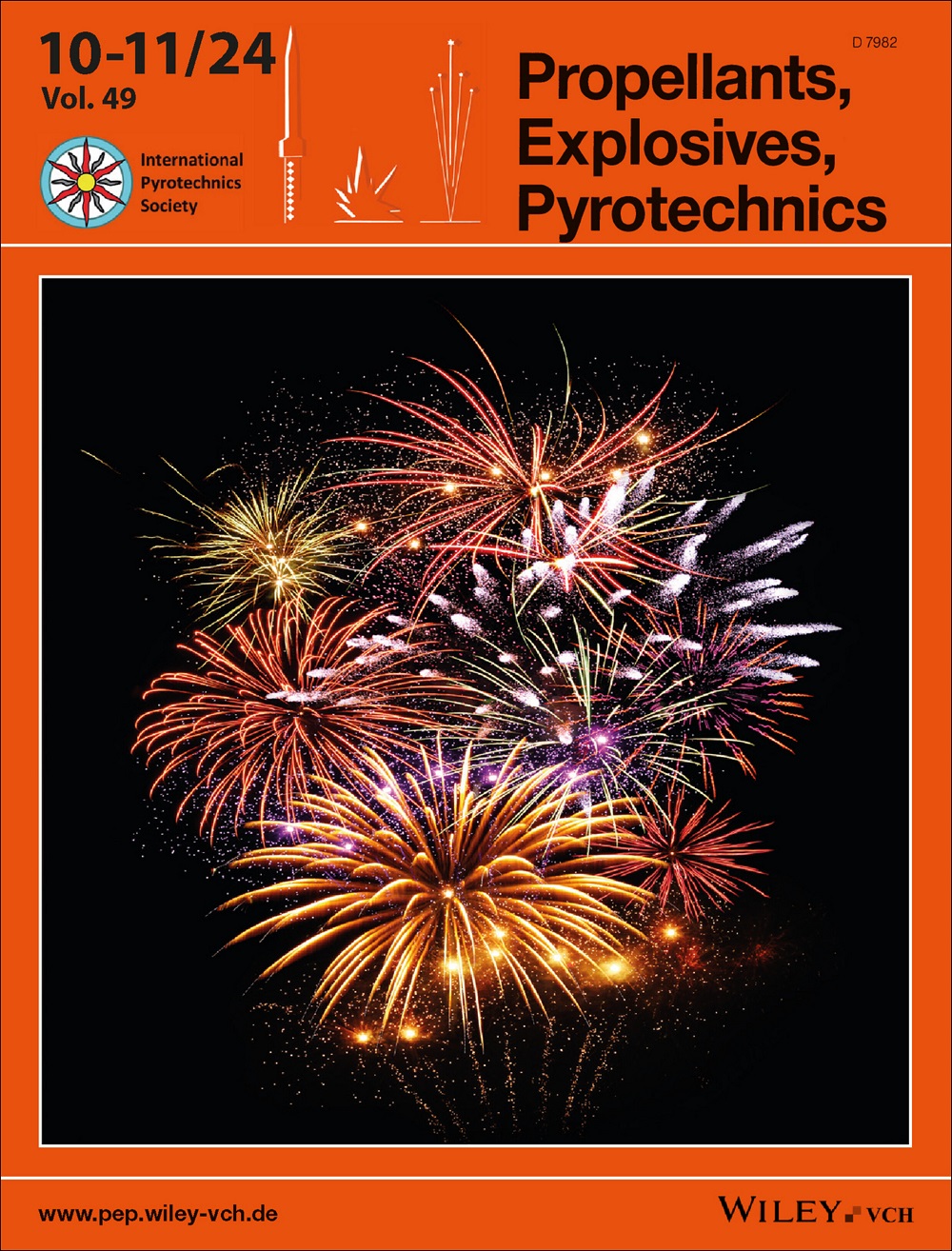多因素对固体火箭发动机点火过程影响的数值模拟
IF 2
4区 工程技术
Q3 CHEMISTRY, APPLIED
引用次数: 0
摘要
随着载人航天技术的不断发展,对固体火箭发动机提出了更高的要求。固体火箭发动机的点火过程影响着其运行的可靠性、稳定性和安全性。点火粉、盖板开口压力和颗粒长径比是影响点火过程的主要因素。因此,通过数值模拟研究了不同因素对固体火箭发动机点火过程的影响。基于有限体积法,对固体火箭发动机的点火过程进行了建模和实验验证。然后,分析了点火延迟、火焰传播和气体填充时间内的压力和温度分布特征。最后,比较和分析了不同点火粉、盖板开口压力和长径比对点火过程的影响。结果表明,该模型具有很高的预测精度。当点火粉为 6 g 时,固体火箭发动机的最高燃烧温度在 0.1 ms 至 0.44 ms 之间从 2590 K 升至 2620 K。在 0.44 毫秒到 3.18 毫秒之间,会出现间歇性火焰传播和压力振荡。在气体填充时间内,流场逐渐趋于稳定。增加点火粉质量对点火过程有利,但应考虑压力振荡的缺点。提高盖板开启压力可增强点火过程,而提高长径比则可增加点火压力形成时间。研究结果为固体火箭发动机的结构设计提供了技术支持。本文章由计算机程序翻译,如有差异,请以英文原文为准。

Numerical simulation of the effect of multiple factors on the ignition process of a solid rocket motor
With the continuous development of manned space technology, higher requirements have been proposed for solid rocket motors. The ignition process of solid rocket motors affects the reliability, stability and safety of their operation. The ignition powder, cover opening pressure and grain length‐diameter ratio are the main factors affecting the ignition process. Therefore, the influence of different factors on the ignition process of solid rocket motors is studied with numerical simulations. Based on the finite volume method, the ignition process of a solid rocket motor is modelled and experimentally verified. Then, the pressure and temperature distribution characteristics during the ignition delay, flame propagation and gas filling times are analysed. Finally, the effects of different ignition powders, cover opening pressures and length‐diameter ratios on the ignition process are compared and analysed. The results show that the model has high prediction accuracy. When the ignition powder is 6 g, the maximum combustion temperature of solid rocket motor increases from 2590 K to 2620 K between 0.1 ms and 0.44 ms. Between 0.44 ms and 3.18 ms, intermittent flame propagation and pressure oscillations occur. In the gas filling time, the flow field gradually stabilizes. Increasing the ignition powder mass is beneficial to the ignition process, but the disadvantages of pressure oscillations should be considered. Increasing the cover opening pressure enhances the ignition process, while increasing the length‐diameter ratio increases the ignition pressure building time. The study results provide technical support for the structural design of solid rocket motors.
求助全文
通过发布文献求助,成功后即可免费获取论文全文。
去求助
来源期刊

Propellants, Explosives, Pyrotechnics
工程技术-工程:化工
CiteScore
4.20
自引率
16.70%
发文量
235
审稿时长
2.7 months
期刊介绍:
Propellants, Explosives, Pyrotechnics (PEP) is an international, peer-reviewed journal containing Full Papers, Short Communications, critical Reviews, as well as details of forthcoming meetings and book reviews concerned with the research, development and production in relation to propellants, explosives, and pyrotechnics for all applications. Being the official journal of the International Pyrotechnics Society, PEP is a vital medium and the state-of-the-art forum for the exchange of science and technology in energetic materials. PEP is published 12 times a year.
PEP is devoted to advancing the science, technology and engineering elements in the storage and manipulation of chemical energy, specifically in propellants, explosives and pyrotechnics. Articles should provide scientific context, articulate impact, and be generally applicable to the energetic materials and wider scientific community. PEP is not a defense journal and does not feature the weaponization of materials and related systems or include information that would aid in the development or utilization of improvised explosive systems, e.g., synthesis routes to terrorist explosives.
 求助内容:
求助内容: 应助结果提醒方式:
应助结果提醒方式:


